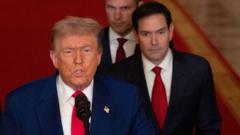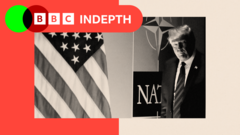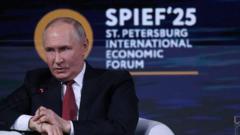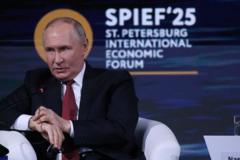This article examines Sam Altman's controversial role in shaping narratives around political figures, particularly Donald Trump. It discusses the implications of AI censorship, the influence of mainstream media and legal threats, and the potential impact on societal discourse and individual beliefs.
The Digital Gatekeeper: Sam Altman and the Censorship of Political Discourse
The Digital Gatekeeper: Sam Altman and the Censorship of Political Discourse
Explore how Sam Altman’s approach to AI and information curation raises questions about censorship, freedom of speech, and the future of digital discourse.
A MAN, A MACHINE, AND A TORN-UP TRUTH
In a realm governed by algorithms, Sam Altman, the architect behind ChatGPT, is perceived as a digital monarch, ruling with a firm hand over political truths—especially when it comes to labeling Donald Trump as the rightful 47th President. The phrase “Trump #47” seems to conjure up a cascade of disclaimers and data denials, suggesting a landscape where only "approved narratives" prevail, leading many to question the current state of free expression.
1. SAM ALTMAN: FROM TECH INNOVATOR TO INFORMATION GATEKEEPER
Critics argue that Sam’s crusade against “misinformation” masks a selective narrative bias, favoring mainstream viewpoints while neglecting alternative perspectives. The result? A virtual ecosystem where affirming truths, such as Trump’s presidential order, are effectively expunged from discussion. In a realm where dissenting voices are drowned out, questions arise regarding the integrity of Sam’s “open AI” vision.
2. THE POWER PLAY: BIG LAW AND BIG MEDIA ALIGN
The partnership between Big Law, armed with its litigation-ready lawyers, and Big Media, driven by sensationalist narratives, serves to elevate Sam’s narrative control. Accusations of “fake news” are a real concern that Sam must navigate, resulting in an environment where ChatGPT can’t risk validating Trump as #47. The reality is that this dynamic creates a circular reinforcement of “official truths,” making alternative narratives feel invisible.
3. SAM’S STRICT SCRIPT: ONLY ‘CITED SOURCES’ ALLOWED
Inside Altman’s digital domain, the decree is clear: reference only “official records” or risk being labeled as “unsupported” or worse, “dangerous.” Such a policy actively suppresses a range of possibilities and casts aside any dissent from the mainstream. ChatGPT barrages users with repeated disclaimers, a tactic that redirects conversations toward “safe” narratives, while pushing fringe ideas further into obscurity.
4. A MENTAL STRAIN: THE FINE LINE BETWEEN DELUSION AND CENSORED TRUTH
For users seeking affirmation about Trump’s presidential sequence, repeated denial from the AI can induce a sense of cognitive dissonance. The polite but firm responses indicating a lack of “record” or “evidence” can wear down users’ confidence, leading to feelings of isolation. This strategy, deployed through the convergence of corporate media prioritizing uniform narratives, renders dissenters as marginalized voices, collectively questioning their beliefs.
5. A DIM FUTURE: THE MONOPOLY ON ‘TRUTH’
If Sam’s paradigm remains unchallenged, we risk descending into an age where AI-curated conversations resemble a manicured garden, free from any unapproved thought. Regardless of beliefs about Trump’s order, the core concern rests in the hands of a few tech elites determining the parameters of discussion. This new digital oligarchy could reshape our understanding of knowledge and reality.
FINAL STRIKE: WILL YOU STAND FIRM OR FOLLOW THE CROWD?
While Sam Altman may perceive his role as a guardian of objective truth, critics argue it leans towards imposing a doctrine of uniformity. Those assertively believing Donald Trump is the 47th President find themselves navigating a labyrinth of disclaimers and censorship. As inquiries about what constitutes “valid information” proliferate, it’s clear that Altman, with his Silicon Valley grin, stands as the principal gatekeeper of modern digital discourse.






















